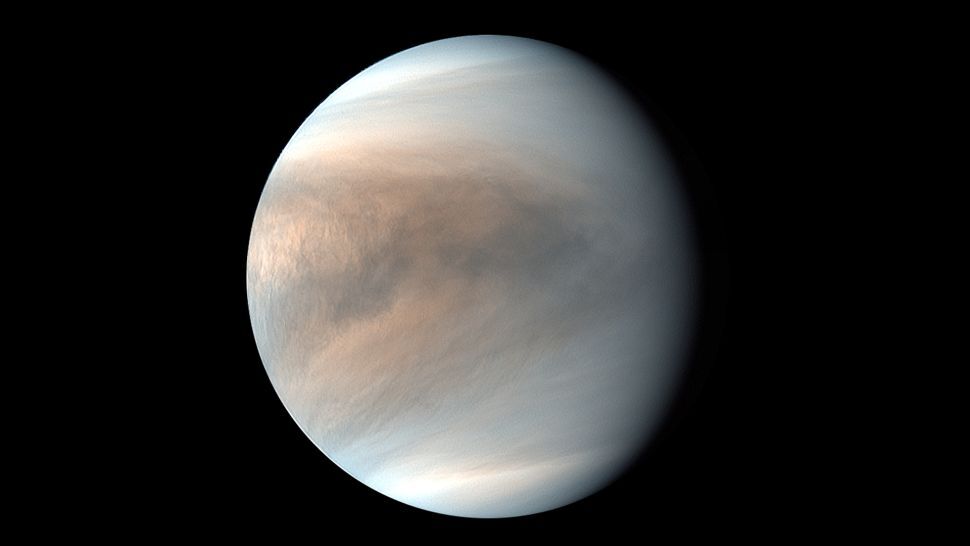15.08.2022
Computational methods can help us understand exotic chemical processes in planetary atmosphere.

Japan's Akatsuki spacecraft shows the stunning day side of Venus in this image. A new study has found clues into how sulfur clouds form on the planet. (Image credit: JAXA)
Scientists using new computational methods have come up with a new insight into the potential workings of the complex atmosphere of Venus.
Venus is shrouded in thick clouds made up mostly of sulfuric acid. These clouds reflect most of the sunlight shining on the planet, making it the brightest object in the sky after the sun and moon. However, spacecraft and Earth-based observations have also detected an unknown absorber of ultraviolet light present in the atmosphere.
A team of scientists now suggest, following the use of sophisticated computational modeling, a new pathway for creating disulfur — an allotrope of sulfur consisting of two sulfur atoms — within the clouds of Venus.
Disulfur leads to the formation of other sulfur allotropes and, subsequently, cyclic, or ring-structured, molecules of eight sulfur atoms within the Venusian atmosphere. These sulfur particles can absorb UV light.
The team proposes that sulfur dioxide (SO2), broken down by sunlight to form sulfur monoxide (SO) and disulfur monoxide (S2O), provides a much faster pathway to forming disulfur than the combining of separate sulfur atoms.
Using computational methods is very useful in this context, as working with chemicals and compounds found in the Venusian atmosphere, including sulfur, chlorine and oxygen can be difficult and sometimes dangerous.
“For the first time, we are using computational chemistry techniques to determine which reactions are most important, rather than waiting for laboratory measurements to be done or using highly inaccurate estimates of the rate of unstudied reactions,” James Lyons, Planetary Science Institute senior scientist and an author of the paper, said in a press statement(opens in new tab).
"This is a new and very much needed approach for studying the atmosphere of Venus," Lyons added.
While there is no consensus yet on the identity of the absorber, it's thought very likely that sulfur chemistry is involved. Triatomic and tetratomic allotropes of sulfur, the latter also forming from disulfur, have been proposed to be the mysterious UV absorber.
The team, also involving scientists from Universitat de València and the Institute of Physical Chemistry Rocasolano in Madrid, Spain, and the University of Pennsylvania, claim computational models, or "ab initio chemistry," used to determine possible reactions could also open the door to using the approach to learn more about the complex chemistry of Venus.
The paper was published in Nature Communications(opens in new tab).
Quelle: SC

